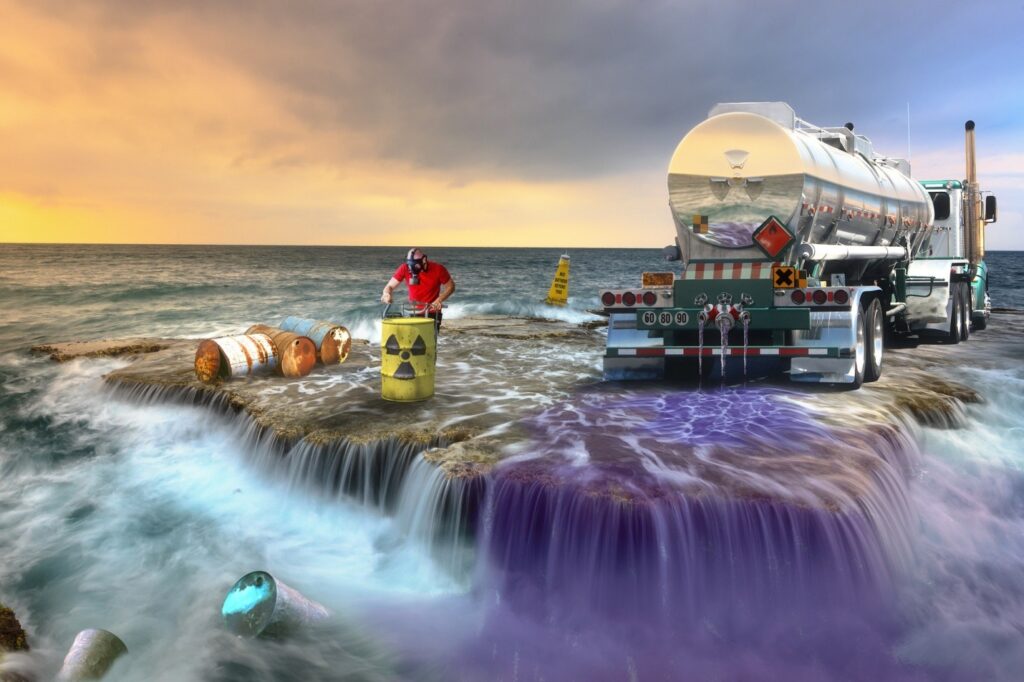The smart Trick of Reclaim Waste That Nobody is Discussing
Table of ContentsReclaim Waste Things To Know Before You BuyThe 10-Second Trick For Reclaim WasteThe 9-Minute Rule for Reclaim WasteThe Only Guide for Reclaim WasteThe Ultimate Guide To Reclaim Waste
Domestic sewer waste refers to the waste and products from a residential septic storage tank. The proper monitoring and disposal of domestic sewer waste require liquid waste to be moved to a sewage therapy plant where the proper techniques and equipment are applied to detoxify and dispose of waste.
Commercial waste commonly consists of potential threats, such as flammable products or a blend of liquid and solid waste items, and requires an advanced and detailed disposal process. The disposal of industrial waste generally entails the filtration of waste before transportation to make sure secure and proper disposal. Industrial waste is developed from results and runoff of industrial processes and manufacturing.
This sort of waste can not use the exact same sewer monitoring transportation or processes as septic or industrial liquids. The industrial waste administration process needs the inspection and testing of liquid waste before it goes through the disposal procedure (liquid waste removal melbourne). Drainage waste is the fluid waste that originates from overflow and excess stormwater in highly populated areas or cities
Overflow waste can trigger contamination and flooding otherwise managed effectively. Find out more regarding sewage system cleansing and waste management. Making certain proper waste management can protect against disasters and reduce ecological harm. Both individuals in domestic settings and experts in industrial or manufacturing industries can gain from recognizing the processes and regulations of liquid waste administration.
Things about Reclaim Waste
Contact PROS Providers today to discover our waste management and disposal solutions and the correct ways to look after the fluid waste you produce.
(https://slides.com/reclaimwaste1)Do you know what takes place to your water when you disengage, flush the bathroom or drain the cleaning maker? No? Well, it deserves understanding. This so-called 'wastewater' is not just an important source but, after therapy, will certainly be released to our land, waterways or the ocean. Utilized water from commodes, showers, baths, cooking area sinks, laundries and commercial processes is recognized as wastewater.

water utilized to cool down equipment or clean plant and devices). Stormwater, a kind of wastewater, is runoff that moves from agricultural and city areas such as roof coverings, parks, gardens, roadways, courses and gutters right into stormwater drains pipes, after rain. Stormwater moves neglected straight to neighborhood creeks or rivers, ultimately getting to the ocean.
The 10-Second Trick For Reclaim Waste
In Queensland, many wastewater is treated at sewer therapy plants. Wastewater is transported from residential or industrial sites through a system of sewage systems and pump stations, understood as sewerage reticulation, to a sewer therapy plant.
The Division of Natural Resources advises local governments regarding managing, operating and maintaining sewerage systems and treatment plants. In unsewered locations, city governments might call for owners to set up private or family sewage treatment systems to treat domestic wastewater from commodes, kitchen areas, washrooms and washings. The Department of Natural Resources authorises using home systems when they are proven to be effective.
Most stormwater obtains no therapy. In some new class, treatment of some stormwater to remove clutter, sand and crushed rock has actually begun making use of gross toxin traps. Wastewater treatment takes place in four stages: Gets rid of solid issue. Bigger solids, such as plastics and other things wrongly released to sewage systems, are eliminated when wastewater is gone through displays.
Wastewater then moves into large storage tanks where solids settle and are gotten rid of as sludge. Oil and scum are skimmed from the surface area. Makes use of small living microorganisms called micro-organisms to damage down and eliminate continuing to be dissolved wastes and great bits. Micro-organisms and wastes are included in the sludge. Removes nitrogen and phosphorus nutrients that can trigger algal blossoms in our waterways and endanger marine life.
Reclaim Waste Can Be Fun For Anyone
Nutrient removal is not available at all sewer therapy plants because it requires pricey specialized tools. Clear fluid effluent created after treatment might still consist of disease-causing micro-organisms - industrial wastewater treatment.

This usually means wastewater has to be dealt with or impurities gotten rid of before it can be discharged to waterways. The majority of wastewater flows into the sewerage system. Under the Act, city governments administer approvals and licences for ecologically appropriate activities (ERAs) including wastewater releases that could have a neighborhood effect. The department carries out authorizations and licences to Periods entailing wastewater releases that could have a local or statewide influence.
The Only Guide to Reclaim Waste
Otherwise, samples are taken for laboratory analysis. Often lots of examinations are needed to establish the degrees of each of the various contaminants such as oils, hefty metals and pesticides in water. Tracking gives accurate details about water quality and can validate that permit conditions are being met. The information gotten through tracking supplies the basis for making water top quality decisions.